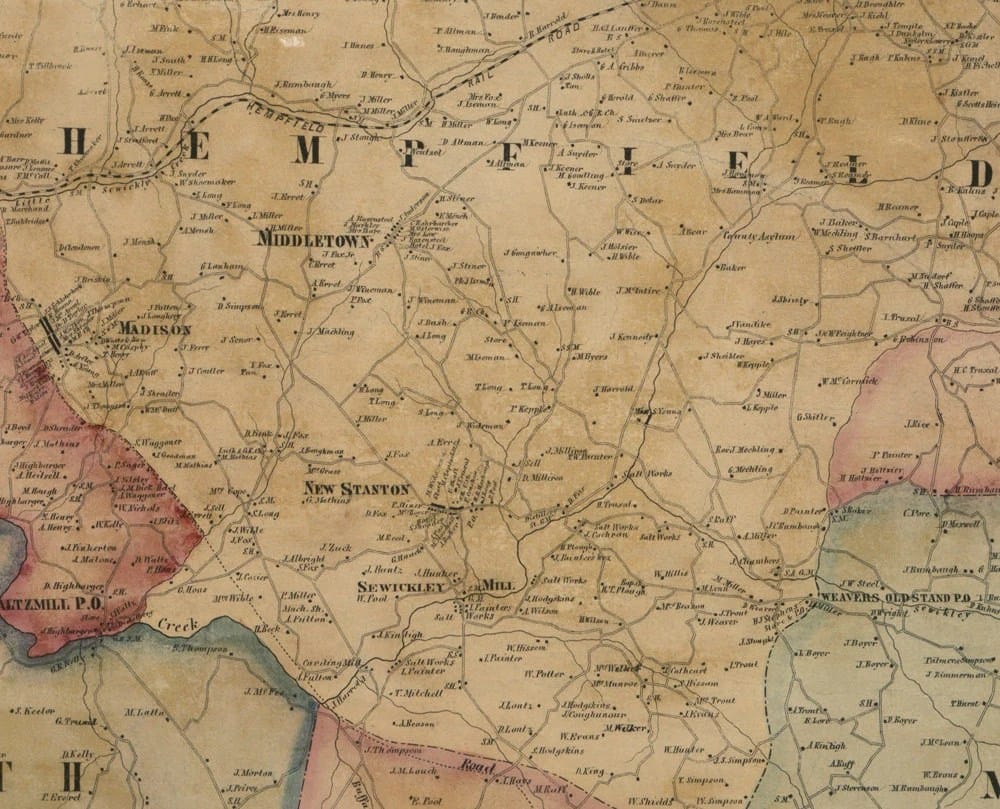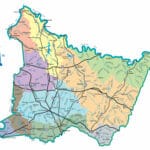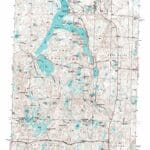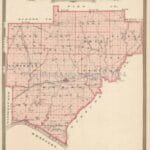Westmoreland County’s Geographic Information System (GIS) offers a wealth of publicly available data, providing valuable insights into the county’s landscape. This comprehensive guide will walk you through accessing, understanding, and utilizing this powerful tool, empowering you to make informed decisions about property, development, and more. Think of it as your key to unlocking the geographic secrets of Westmoreland County.
Accessing Westmoreland County GIS Data
Getting started is easy! The Westmoreland County GIS official website is your central hub. Here’s a step-by-step guide:
- Visit the Website: Navigate to the official website. You’ll find information on various GIS services, including links to the Tax Mapping website and a secure file transfer site for larger datasets.
- Explore the Tax Mapping Site: Accessible through the main GIS page, the Tax Mapping website allows you to explore property-specific information, including boundaries, ownership, and tax assessments. For in-person assistance, the Tax Office is located at 40 N Pennsylvania Ave Ste 430, Greensburg, PA 15601.
- Dive into the ArcGIS Web Application: The Westmoreland County ArcGIS Web Application is a powerful interactive tool. You can explore different data layers, zoom in on specific areas, and even perform basic analysis.
- Access the IWRP: The Integrated Water Resources Plan (IWRP) is available through a dedicated ArcGIS web application. This interactive map integrates data from various sources, including Esri, HERE, Garmin, USGS, NGA, EPA, USDA, and NPS, providing comprehensive information on water resources.
- Consider Secure File Transfer: For professionals working with large datasets, the county offers a secure file transfer system, accessible through the main GIS website. This provides a secure and efficient method for downloading extensive spatial data.
Understanding the Data
Westmoreland County GIS provides access to various data types, including:
- Parcel Boundaries: Precise property lines, helpful for understanding land ownership and use.
- Ownership Information: Details about property owners, useful for research and demographic analysis.
- Tax Assessments: Property valuations used for tax purposes, often influenced by factors like infrastructure and nearby amenities.
- Soil Composition: Information on soil types, essential for construction and agricultural planning.
- Elevation Data: Terrain elevation, valuable for understanding drainage patterns and potential flood risks.
- Aerial Imagery: High-resolution aerial photographs, providing a visual context for other data layers.
- Zoning Regulations: Designated land use rules, crucial for development planning.
- Floodplains: Areas susceptible to flooding, vital for assessing risks and making informed decisions.
- Infrastructure: Location of roads, bridges, and utilities, essential for planning and emergency response.
- Environmental Features: Distribution of natural resources, essential for environmental analysis and conservation.
Practical Applications of Westmoreland County GIS Data
The practical applications of this data are vast:
- Property Research: Investigate ownership history, boundaries, tax assessments, and potential risks before buying or selling.
- Development Planning: Analyze zoning, environmental factors, and infrastructure to identify suitable development locations.
- Environmental Analysis: Study natural resources, assess development impacts, and support conservation efforts.
- Emergency Response: Provide first responders with critical location information for navigation and resource allocation.
- Community Planning: Inform community development initiatives by analyzing demographics, infrastructure needs, and land use.
- Renewable Energy Planning: Assess solar potential and site suitability for renewable energy projects using factors like slope, aspect, and shading.
- Infrastructure Management: Analyze the condition and capacity of existing infrastructure, like roads and bridges, to prioritize maintenance and improvements.
Tips and Tricks for Using Westmoreland County GIS
- Bookmark Key Resources: Save the official website and web applications for quick access.
- Explore Data Layers: Familiarize yourself with the different types of data available and their potential uses.
- Contact the GIS Office: Don’t hesitate to contact the County GIS office for assistance or clarification.
Advanced GIS Analysis with Third-Party Tools
For advanced users, software like Esri’s ArcGIS Desktop offers powerful analytical capabilities, including custom map creation, complex spatial analysis, and the development of specialized geospatial applications.
Looking Ahead: The Future of Westmoreland County GIS
Westmoreland County is likely to continue enhancing its GIS offerings. This may include integrating new data sources, improving user interfaces, and incorporating emerging technologies like 3D visualization and augmented reality.
Comparing Westmoreland County GIS with Neighboring Counties
While a full comparison requires further research, initial observations suggest that Westmoreland County offers a robust and accessible GIS platform, comparable to or exceeding the offerings of some neighboring counties. Further investigation into the specifics of neighboring county GIS platforms would be beneficial for a more comprehensive comparison.
Glossary of Key GIS Terms
| Term | Definition |
|---|---|
| GIS | Geographic Information System: A system for capturing, storing, analyzing, and managing spatial data. |
| Parcel | A specific piece of land, often representing a single property. |
| Zoning | Regulations determining how land can be used in different areas. |
| Floodplain | Low-lying land adjacent to a river, subject to flooding. |
| LiDAR | A remote sensing method using lasers to create 3D models of the Earth’s surface. |
Westmoreland County GIS: Empowering Informed Decisions
Discover the power of geographic information systems with comprehensive resources for Westmoreland County PA GIS and explore the diverse landscape and data insights available through the innovative Watauga County GIS platform. Westmoreland County’s commitment to providing accessible and comprehensive GIS data empowers residents, businesses, and government agencies to make informed decisions, fostering sustainable development and a deeper understanding of our community.
- Discover Long Black Pepper: Flavor & Health Benefits - April 25, 2025
- Shocking Twists: The Grownup Review: Unreliable Narration - April 25, 2025
- A Quiet Place Book vs Movie: A Deep Dive - April 25, 2025
















